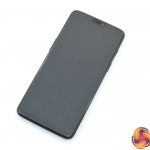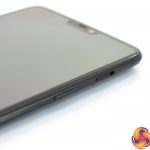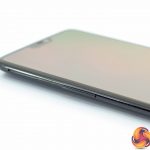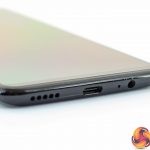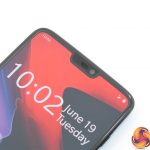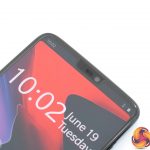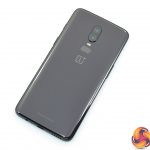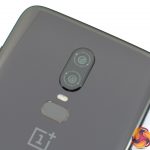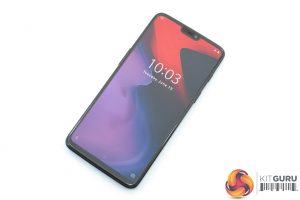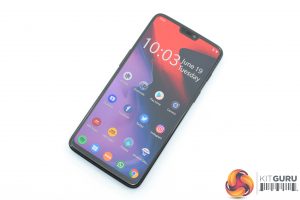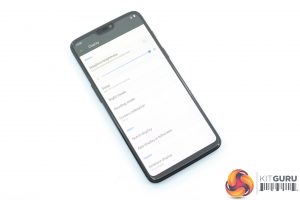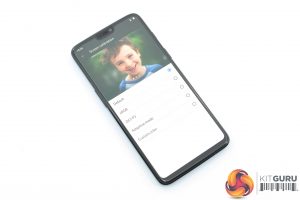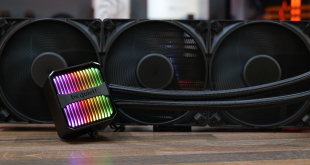Design
Note: if the above images are not displaying properly, you may need to disable your ad block software as they are known to interfere with our display code.
At a distance, the OnePlus 6 may look quite similar to the 5T before it – but it is clear quite a lot has changed when we get a closer look. Firstly, the phone has a larger 6.28in display, and yes it does have a notch, though it is quite compact and can actually be ‘disabled' via the settings menu. Secondly, the rear of the phone is now glass, rather than the aluminium panel of the 5T. Interestingly, however, the OP6 does not support wireless charging which is one of the benefits to using glass panels.
Still, the phone feels really good in the hand and I think it is quite attractive – I personally like the look of glass-backed phones, though this is obviously subjective. The sample shown above is the ‘mirror black' option which certainly looks quite glossy and is a fingerprint magnet, though there is also the ‘midnight black' option which has more of a matte finish – as matte as glass can be, anyhow.
On the back of the phone, the dual camera setup has also been moved to a central position, with the fingerprint scanner positioned underneath the two lenses. The scanner is no longer a true circle, instead it is more ovular in shape. Personally, I much prefer the circular design as it feels more natural when placing your finger to unlock the phone, but this scanner will still get the job done.
Elsewhere, the classic OnePlus alert slider is on the right-hand edge of the phone, just above the power button. The two volume buttons can be found on the left-hand edge, below the SIM tray which supports dual nano SIMs but no microSD card. On the bottom edge we find the USB-C port, a 3.5mm jack and a single downward firing speaker.
Lastly, it is also worth noting the fact that the OnePlus 6 does not have an official IP rating for water and dust resistance. OnePlus says the phone is water resistant, and from the tear downs I have seen of the OnePlus 6, it looks like the phone has the necessary foam and rubber linings to protect it from accidental submersion. It is likely OnePlus did not go through the official IP accreditation process purely to save on costs, though it does mean I wouldn't be quite as cavalier with the OnePlus 6 as you might with the IP68-rated S9.
Display
As mentioned, the OP6 sports a larger 6.28in display. Thanks to the notch design, the physically longer panel means the resolution has also been bumped up to 2280 x 1080 – a 19:9 aspect ratio.
2280 x 1080 across the 6.28in screen gives a pixel density of 402 PPI, which is essentially the same as the previous-gen 5T. This means it is generally sharp but lacks the absolute crispness of 1440p displays found on the likes of the S9 or Pixel 2 XL. For the majority of users, though, it will be plenty sharp enough.
Arguably more importantly, the screen uses an AMOLED panel, and I have to say it is very impressive for the price. Colours are nice and punchy, contrast is excellent and the range of brightness is also good enough that using the phone outdoors is no problem at all. In my opinion, Samsung still makes the best smartphone panels at the moment – but the OP6 certainly isn't far off.
Lastly, the phone also gives you a few options when it comes to colour calibration. For general use, I fount the default mode to give the most pleasing colours and white balance, though there are also sRGB and DCI-P3 modes, plus the option to set a custom colour balance.
 KitGuru KitGuru.net – Tech News | Hardware News | Hardware Reviews | IOS | Mobile | Gaming | Graphics Cards
KitGuru KitGuru.net – Tech News | Hardware News | Hardware Reviews | IOS | Mobile | Gaming | Graphics Cards


